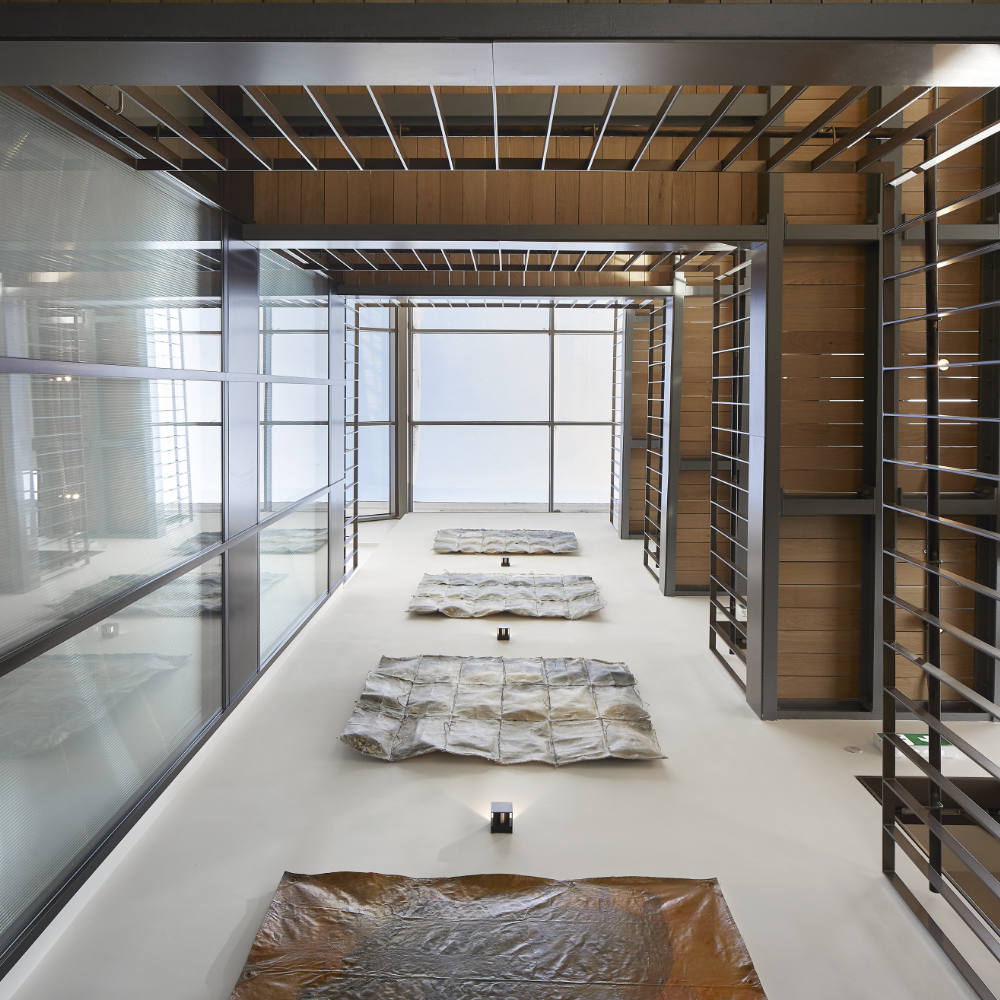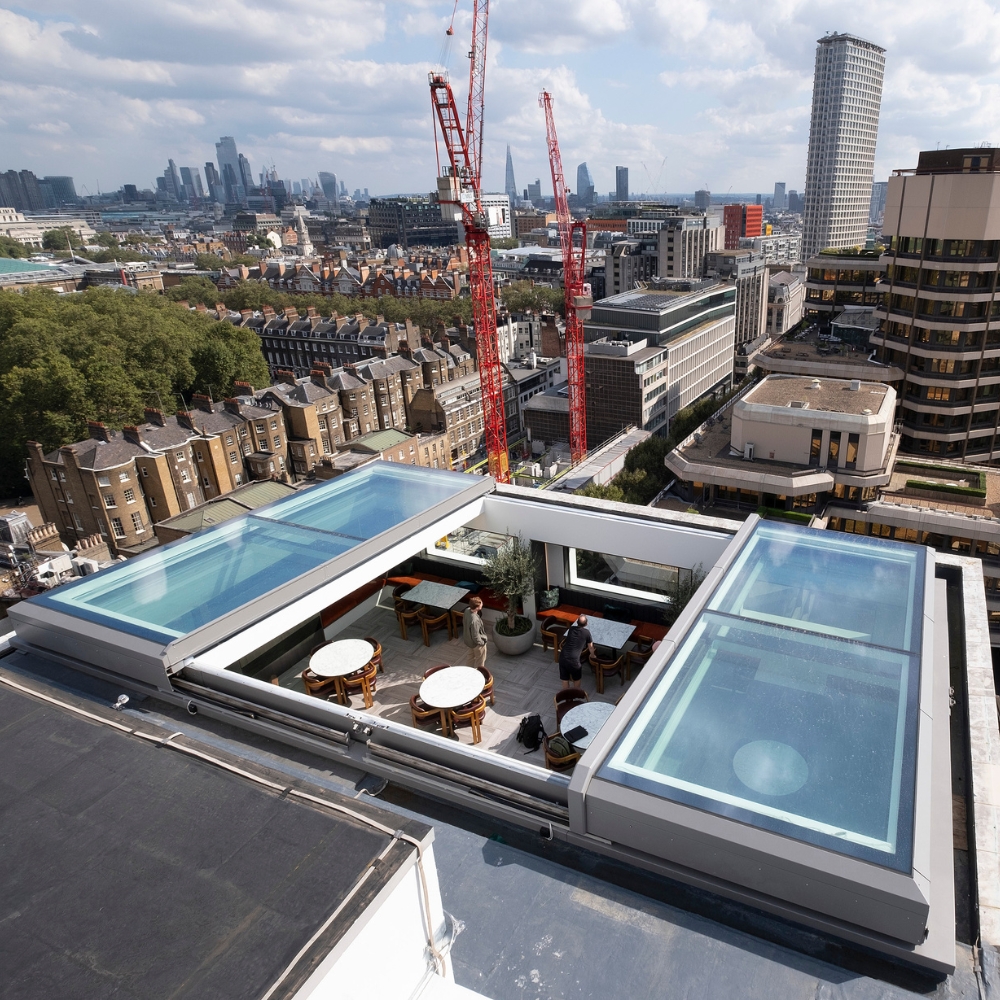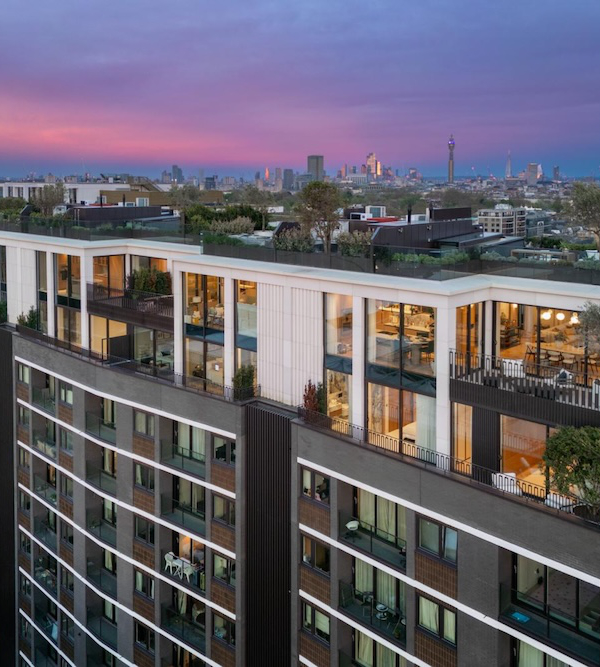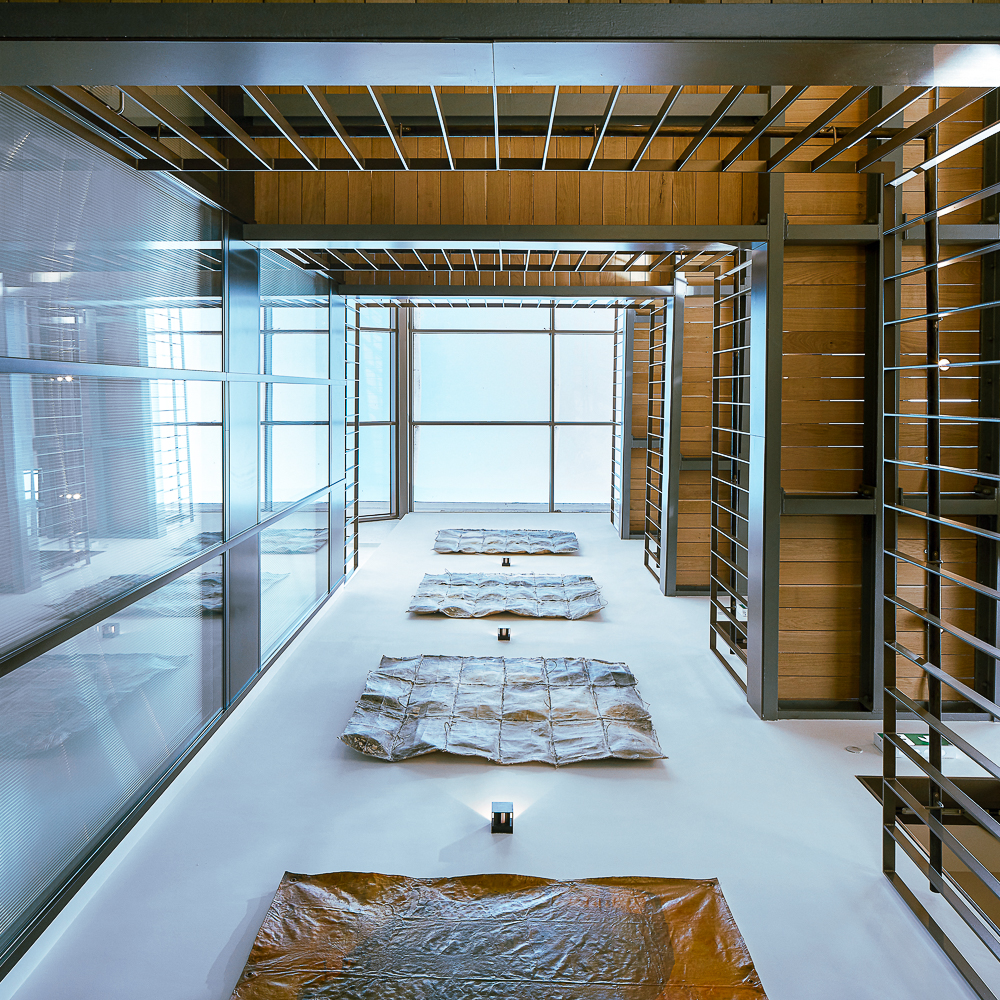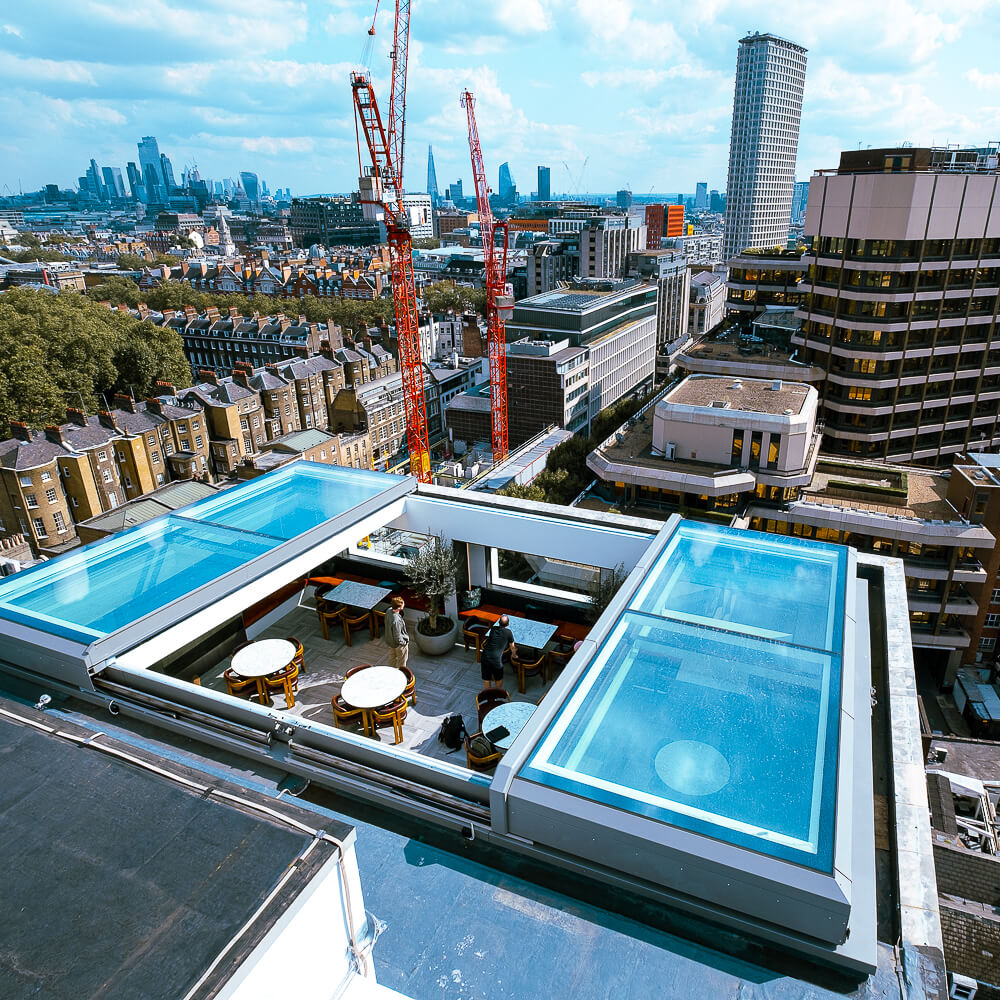Building Safety Act 2022: Safer Tall Buildings and Compliant Rooflight Solutions
Introduction to the Building Safety Act 2022
The Building Safety Act 2022 (BSA) was introduced as a sweeping reform to UK building regulations. It represents the most significant regulatory change in decades, ushering in stricter requirements for the design and construction of buildings – particularly tall structures. Architects and developers now face new obligations to ensure every component of a building meets higher safety standards.
Stricter Safety Rules for Tall Buildings
Which buildings are affected?
The BSA creates a more stringent safety regime for “higher-risk buildings,” defined as those over 18 metres or 7 plus floors in height with residential units. These buildings are now subject to enhanced oversight by a new Building Safety Regulator (BSR) housed in the Health and Safety Executive. The BSR becomes the building control authority for taller buildings, enforcing compliance throughout design and construction.
What’s new in the process?
The Act introduces a series of “Gateways” these are mandatory checkpoints at key stages to put safety at the core of procurement and construction. For any new tall development:
- Gateway 1 (Planning): Even at planning permission stage, fire safety must be considered in design proposals (this Gateway was introduced via planning rules in 2021).
- Gateway 2 (Pre-Construction): Before construction begins, detailed building control approval from the BSR is required, with comprehensive technical information to prove the design meets all building regulations. No breaking ground until the regulator signs off.
- Gateway 3 (Completion): Upon construction completion, the BSR must issue a final completion certificate before the building can be occupied, certifying that the finished building indeed complies with the approved plans and safety requirements.
These mean architects and contractors need to get things right the first time – last-minute design changes or spec swaps can trigger delays or even refusal of approval.
Duty holders responsibility
New duty-holders – Under the BSA, the responsibility for safety is shared across duty-holders – clients, principal designers, contractors, etc. – who must plan, coordinate, and communicate to ensure all work complies with building regulations. So, every design decision, material specification related to fire or structural safety must be kept up to date.
Thus, if you specify a large rooflight or glazing system in a tall building, the technical details (dimensions, materials, fire rating, structural calculations, installation method, etc.) should be documented in the golden thread** repository. This ensures future stakeholders can understand how that component contributes to keeping the building and its occupants safe
** In construction, the “Golden thread” refers to a digital record of building information that ensures safety and compliance throughout a building’s lifecycle.
Expanded legal accountability
The Act also expands legal accountability, the time window for raising claims over defective work has been extended. There is a now a cause of action against construction product manufacturers and suppliers, so if a product is incorrect or fails and causes a building to be unfit for habitation, the manufacturer can be liable for damages.
The Building Safety Act 2022 establishes a more stringent safety regime for residential buildings over 18m or 7 floors, with a dedicated regulator overseeing design and construction compliance.
Designing for Compliance in the BSA Era
These reforms fundamentally change how architects and developers approach building design, especially for tall projects. The emphasis now is on “getting it right first time” and documenting it, rather than relying on inspections to catch issues later. There are practical implications for the design phase including:
Detailed specification
Since changes after Gateway 2 approval are difficult, it’s important to have the correct specifications from the outset. All the buildings elements, structure, facades, mechanical systems, products like rooflights need to be chosen with compliance from the outset.
Thorough documentation
At Gateway 2, you must provide the regulator with extensive evidence of compliance – fire engineering reports, structural calculations, product test certificates, installation plans, etc. (throughout construction, any deviation must be recorded in the golden thread).
Focus on materials
Fire safety for tall buildings is crucial, combustible materials on external walls are effectively banned. If your design includes large areas of glazing or rooflights frames, seals, and infill materials must be compliant. Glass is (typically) non-combustible, but any insulation, fixings, coatings etc. in a rooflight or curtain wall system need to be checked for fire rating. Our products have been tested and certified for use in tall buildings.
Competence and quality in construction
Quality of installation is as important as quality of design. The BSA’s duty-holder requirements mean architects, contractors, and suppliers must cooperate closely. Working with manufacturers who have proper installation training and can supply evidence of their own quality assurance is part of our collaborative approach to ensure the finished building matches the safety intent of the design.
Rooflights and Glazing Under the New Regulations
Next Generation Rooflights’ products align with the BSA’s goals
Our range of rooflights and structural glazing solutions has been developed not only to enhance buildings aesthetically and functionally, but also to meet the heightened safety and performance standards now expected.
All our products are manufactured using high-quality, tested materials at our facility in East Anglia, and are designed to meet (or exceed) industry standards and building regulations. We understand that in a post-BSA world, there’s no room for compromise on compliance.
Large Flat Rooflights
We use robust, non-combustible frames (e.g. thermally broken aluminium) and high specification glazing units. Heat Strengthened Laminated glass will fracture safely and remain in place, rather than shatter and drop even if impacted or in a fire scenario. Our large flat rooflights are engineered to withstand wind loads and snow loads at high elevations, and we provide structural calculations to verify this for each project.
By installing our large flat rooflights, architects can comply with Building Regulations Part A (Structure) and Part C (resistance to weather) while also satisfying the BSA’s demand for rigorous documentation (we supply all necessary performance data for the golden thread record).
Multi-Part Rooflights
Multi-Part Rooflights are an ideal solution for expansive roof openings or atrium spaces, our multi-part rooflight systems are designed with continuous weather seals between sections, ensuring that there are no weaknesses in the envelope. All components are carefully selected for durability and fire safety. If required we can use fire-resistant glass, with sealants and frames tested for performance.
Multi-part units also come with comprehensive technical drawings and installation guides which supports the coordinated approach that the BSA expects between designers and installers.
Walk-on Rooflights
Our walk-on rooflights feature thick laminated glass (often multi-layered, e.g. a total thickness of ~25-33mm with interlayers) that can sustain significant loads without failure – easily meeting domestic floor load requirements (in the realm of 1.5 kN/m² uniform load and 2.0 kN point load) to ensure they are safe to walk on. We can also manufacture commercial loading walk on rooflights if required.
The glass can be finished with a R11 non-slip coating for pedestrian safety. These units enable architects to create stylish glass floors or roof terraces while fully complying with structural loading standards and fall protection rules. We provide load test data and certifications for each walk-on unit, so the evidence can be supplied to building control and the BSR as needed.
Sliding Rooflights
Sliding rooflights offer the convenience of rooftop access or enhanced ventilation for buildings, which is particularly useful in taller residential buildings where roof terraces or plant access is needed. They incorporate motors and smart control systems. We prioritise safety in the mechanics – including failsafe features like obstacle detection and manual override.
Structurally, the sliding sections are sturdy and weatherproof liked a fixed rooflight when closed, maintaining the building’s integrity (important for fire and energy performance). Sliding rooflights can be used as safer and more user-friendly option to roof access hatches and we ensure our designs comply with Building Regulations Part K (safe access) and Part L (thermal efficiency).
Electrical components are tested and certified, and installation by our trained team guarantees the unit performs as intended. This level of reliability and documentation helps architects satisfy the BSA’s requirements by providing evidence that even dynamic elements like an opening rooflight won’t compromise overall building safety.
Structural glazing
With expertise in structural glazing solutions – from curtain walls and canopies to bespoke façades. Structural glazing often forms part of the external wall, so non-combustibility and structural adequacy are critical. Our structural glazing systems use tempered and laminated glass panels combined with metal framing or fittings that can meet relevant ratings (in compliance with the combustibility requirements for tall façades).
We supply detailed Declarations of Performance and fire classification reports for our systems, so specifiers can prove compliance with the relevant regulations. Additionally, all structural glazing is engineered with proper allowances for building movement (important in tall structures that may sway) and is tested for impact safety (satisfying Part K for preventing falling risks).
We manufacture and install these glazing solutions, working closely with the project’s team to integrate them safely into the building’s fire strategy.
Your Partner for Safety and Success
Designing and constructing to meet the Building Safety Act’s higher bar but it ultimately leads to safer outcomes for everyone. The BSA encourages collaboration, choosing the right partners and closer coordination between designers, contractors, and suppliers, which is exactly how we at Next Generation Rooflights work.
Your trusted advisor
We pride ourselves on being “your trusted advisor, not just a supplier,” helping project teams from initial design concepts through to final installation. Our technical experts help architects and developers identify the best glazing solutions for their needs and ensure those solutions come with the necessary certifications and documentation for regulatory compliance.
Competence and accountability
By involving us early in the design process, we bring our deep understanding of rooflight and structural glazing technology to help make informed, safety-first decisions. We’ll provide all the evidence you need (spec sheets, test results, compliance certificates), making it easier to satisfy the BSR at Gateways 2 and 3. During construction, our experienced installation teams work to exacting standards, which supports contractors in fulfilling their duty to “plan, manage and control” the work safely. We take our share of the responsibility seriously, knowing that under the new regime, competence and accountability are essential.
Inspiring designs and peace of mind
As an industry, adjusting to the new Building Safety Act regulations is essential, it’s a necessary to prevent future tragedies and rebuild public trust in the safety of our buildings. For architects and developers, the Act means more diligence in design and product selection, but it also creates an opportunity to deliver higher quality projects. With innovative, compliant products like our large rooflights, walk-on skylights, and structural glazing systems, means you don’t have to sacrifice creativity or functionality to meet the stricter standards. You can have inspiring designs and peace of mind about safety.
In a new era of building safety
In this new era of building safety, Next Generation Rooflights is committed to being your partner every step of the way. Together, we can create buildings that are not only beautiful and filled with natural light but also built on a foundation of compliance and care for occupant safety. By choosing the right products and working collaboratively, architects and developers can turn the demands of the Building Safety Act into an opportunity for better, safer design.
We’re here to help you
We’re here to help you do exactly that – bringing your vision to life in a way that meets all the regulations and delights your clients.
For more information on any of our products or to discuss how to achieve compliance on an upcoming project, please contact our team, we’re always happy to offer guidance in navigating these new building safety requirements for your projects.
All information is up to date as of 2025, reflecting the current post-BSA regulatory environment in the UK.
